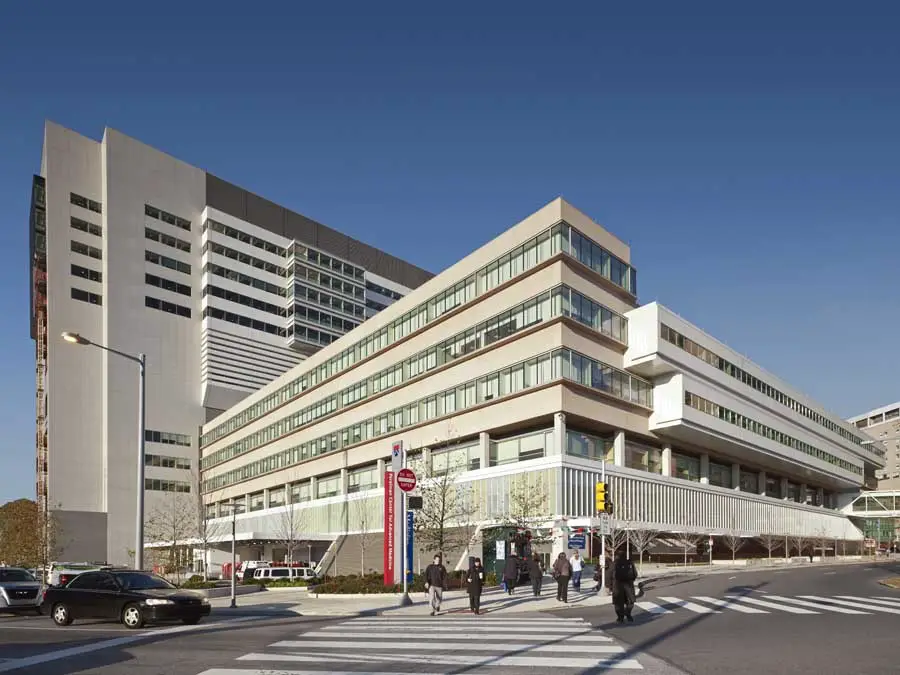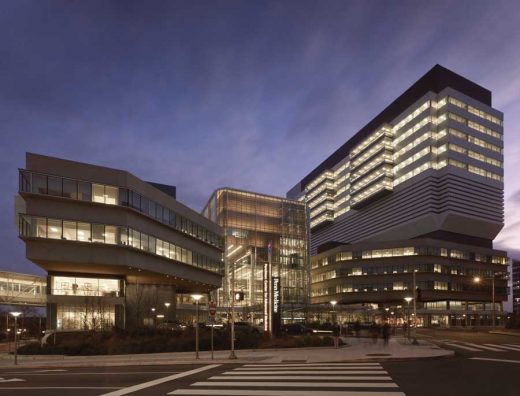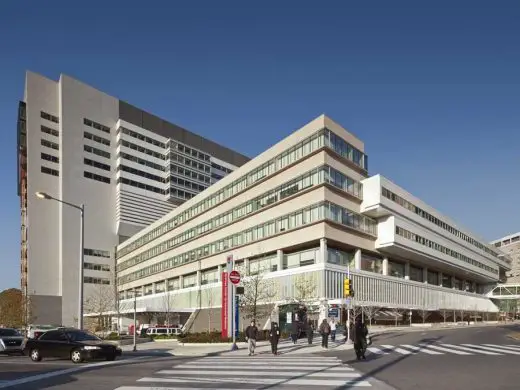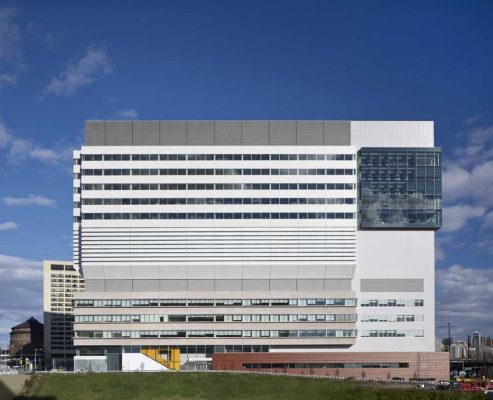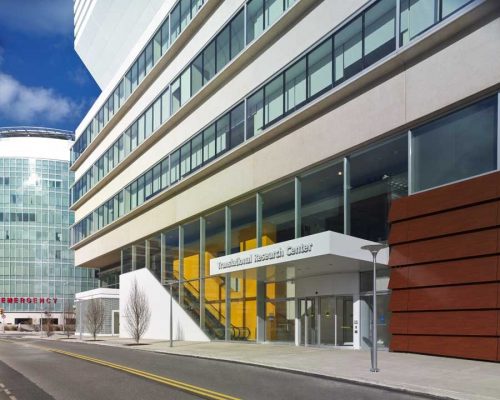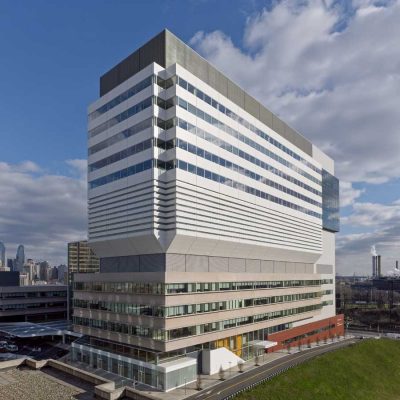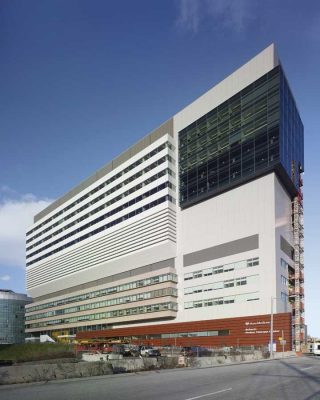Penn Translational Research Center, Philadelphia Medical Building, US Healthcare Architect Design
Translational Research Center at Penn News
Philadelphia Building, USA: Architecture design by Rafael Viñoly Architects
post updated Mar 4, 2023
Rafael Viñoly, the world-renowned Uruguayan architect who designed this building has died aged 78.
May 11, 2011
Rafael Viñoly Architects Announces Completion of Translational Research Center at Penn
Design: Rafael Viñoly Architects
Photographs: Brad Feinknopf
Translational Research Center Penn
NEW YORK – Rafael Viñoly Architects is pleased to announce the completion of the Translational Research Center at Penn in Philadelphia, Pennsylvania.
This first expansion phase in an overall master plan for Penn Medicine that includes both the University of Pennsylvania Health System and the University’s School of Medicine, the Translational Research Center builds on the original Perelman Center while simultaneously preserving its urban character and laying the groundwork for future development. As a translational facility, the new building unites research and clinical functions under one roof to allow the practices of scientific investigation and patient care to inform one another through close proximity.
The new research center consists of a 14-story extension to the west wing of the Perelman Center. Despite its increased height, the placement of the lab building along the perimeter of the Perelman Center respects the central atrium as an urban landmark and public gathering place. Future expansion of the facility will also line the outside of the building, along the south and east wings.
The basement of the Translational Research Center houses the existing Roberts Proton Therapy Center, designed by Tsoi Kobus and Associates, and for which Rafael Viñoly Architects performed limited design services, above which three floors expand the clinical spaces of the original Perelman Center. Separated from the clinical floors by an interstitial mechanical level, seven stories of laboratory research spaces constitute the facility’s new programming and include two vivarium levels.
In order to prevent noise and movement from disturbing the animals and to make service access easier, the design elevates the vivarium floors above the proton facility and the three floors that extend the clinical spaces of the original Perelman Center building, separating animal research from the lower public zones by an interstitial mechanical level on the fifth floor.
Express service elevators bypass the clinical levels to allow for swift, private circulation of animals and researchers from the basement loading docks to the laboratories on the sixth and seventh floors. Louvered windows on the vivarium levels admit natural light while reducing disturbances to the research program.
Three animal-imaging MRI stations are located on the first floor above the proton therapy gantries in the basement to accommodate shared proton services. Above the vivarium levels, five floors of open, flexible research labs feature thirty-six lab modules per floor and can accommodate 105 researchers.
The laboratory bench space achieves a new level of flexibility. Lab benches can be reconfigured or completely removed and replaced with computer workstations or traditional offices. This can be done without electricians, carpenters or plumbers and without special tools.
Furniture and lab benches are “plugged” into gas, electric and data systems that are available in a regular floor grid. On a day-to-day basis, users control their environment through personal task lighting and adjustable-height lab benches. All in all, the completion of the PENN Medicine Translation Research Center marks Rafael Viñoly Architects continued partnership with the thriving healthcare and biomedical industries.
Translational Research Center at Penn images / information from Rafael Viñoly Architects
Location: Penn, Philadelphia, Pennsylvania, USA
New Philadelphia Architecture
Contemporary Philadelphia Architecture
Philadelphia Architecture Designs – chronological list
Philadelphia Architects Offices
The Philadelphia Museum of Art Breaks Ground on Frank Gehry-Designed “Core Project”
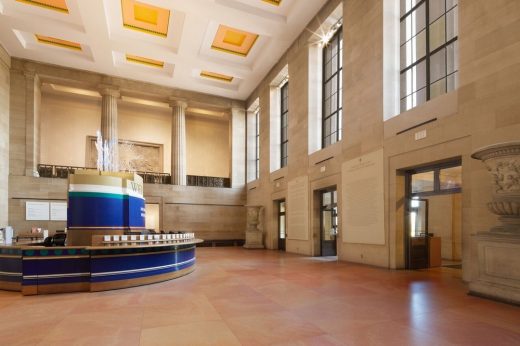
image courtesy of architects office
Philadelphia Museum of Art Building by Frank Gehry
New College House at the University of Pennsylvania in Philadelphia
Design: Bohlin Cywinski Jackson
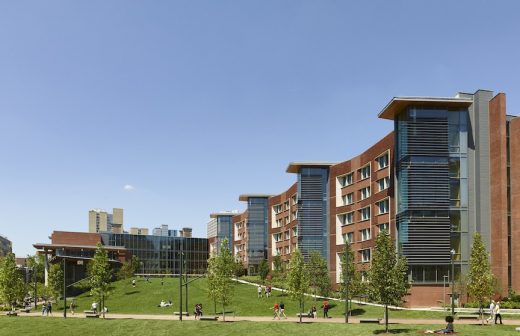
image from architects studio
University of Pennsylvania Building in Philadelphia
Global Vascular Institute Building New York, Buffalo
Design: Canon Design Architects
McGee Art Pavilion, Alfred University
Design: ikon.5 architects
Molloy College Campus Center, Rockville Centre
Design: BRB Architects
Comments / photos for the Translational Research Center at Penn, Philadelphia building design by Rafael Viñoly Architects in the USA page welcome

